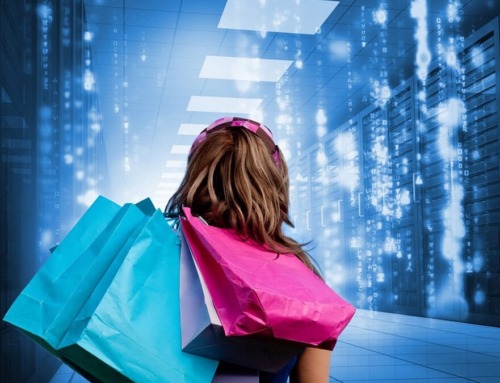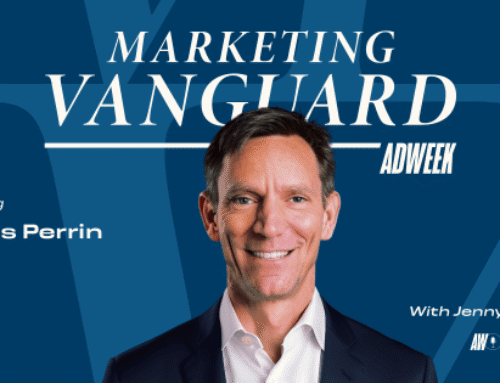As trend fatigue sets in, consumers are trading fleeting fads for wellness rituals, athlete role models, and AI-aided self-discovery
For years, beauty and wellness have shaped one another, with a growing number of beauty products featuring ingredients that tout active health benefits, and more consumers subscribing to the wellness-centered idea of “beauty from within.” Amid growing polarization between aspirational ideals and attainable goals, some beauty brands are starting to expand their marketing language from looking good to feeling good.
In turn, wellness also increasingly encroaches on beauty consumers, as many young people see beauty routines as a tool to help maintain self-care and improve mental wellbeing. According to a Vogue Beauty report, 77% of 18–24-year-olds define wellness as “anything that makes you feel good.” Therefore, beauty brands with a clinically inclined, wellness-oriented narrative are perfectly positioned to capitalize on the young consumers’ health-focused spending habits.
Moreover, wellness is emerging as a status symbol for the younger generations. Beauty products and makeup aesthetics have long been a key social signifier. Now, high-end spas and wellness clubs are becoming “Gen Z’s answer to the country club.” These luxury wellness spots offer everything from meditation rooms and group yoga to cold plunges and IV drips, making wellness feel both indulgent and justifiable to consumers.
Over the last decade, numerous beauty brands with celebrity or influencer founders have emerged. These brands build fan communities around their personal aesthetic, lifestyle, or social presence. For example, Hailey Bieber’s RHODE beauty was recently acquired by e.l.f beauty for $1 billion as it looks to reach higher-income shoppers. While a prominent founder can propel growth, their appeal alone is insufficient for long-term success.
Of course, the growing overlap between beauty and wellness is largely driven by algorithmic consumption of user-generated content. Social feeds have long shaped what’s trending in both spaces, but as trend cycles accelerate and fragment, gaps emerge where certain ideas can break through and begin influencing across categories.
Yet, in recent months, this obsession with virality has hit a wall of its own making. Micro-trends in beauty now last mere weeks, not seasons. From “latte makeup” to “donut glaze dewy skin,” trends quickly cycle in and out of popularity, the average consumer can barely keep up, nor do they want to.
There’s also growing disillusionment with the flood of algorithm-driven product hype. Many consumers feel manipulated into buying more products than any single face could use in a lifetime. And when the next trend is always a swipe away, there’s no time to actually enjoy the last one you bought into. It is becoming increasingly hard for consumers to distinguish between fleeting fads and lasting trends that provide long-term value. As micro-trend fatigue sets in, brands will need to align with cultural moods in ways that feel authentic in a post-viral era.
As micro-trend fatigue sets in, brands will need to align with cultural moods in ways that feel authentic in a post-viral era.
In the post-viral era of beauty, influence is shifting away from traditional beauty influencers and algorithmic virality toward more grounded, values-aligned sources. If the old guard of beauty and wellness was built on YouTube tutorials and viral TikTok videos, the new guard is taking cues from much different arenas.
For one, the growing cultural capital of women’s sports is creating a fresh source of beauty influence — one rooted in confidence, not contouring. Athletes like Coco Gauff and Angel Reese are beauty and fashion icons, not in spite of their strength, but because of it. According to a SurveyMonkey and Parity study, products endorsed by female athletes are 2.3 times more likely to drive purchases than those backed by traditional influencers. Brands like Carol’s Daughter are taking note, partnering with athletes to tell more inclusive, empowering beauty stories.
At the same time, we’re seeing beauty become a signifier for intellectual identity, and creators with real community influences are driving beauty trends over algorithmic chaos. Call it “academic beauty” or “quiet luxury” anchored in classic literature or fine art. Along the rise of #BookTok, #ArtTok, creators like Madeline Pendleton prove there’s power in looks that reference literary heroines or art history. In this case, beauty isn’t about looking good for others. It’s about signaling that you know things.
Wellness continues to serve as a key post-viral source of influence for beauty. In the post-viral era, consumers are moving away from beauty as performance and gravitating toward beauty as a tool for well-being, ritual, and emotional regulation. Consumers now link beauty to internal health — sleep, gut health, and hormonal balance — not just skin-deep products. Emerging concepts such as skinimalism, “inside-out beauty” (e.g., collagen drinks, adaptogens), and the rising interest in longevity rituals are all symptoms of this wellness-oriented approach.
AI chatbots are also emerging as a key source of influence on the post-viral beauty landscape, where some people are turning to AI for makeup ideas and workout plans, or even brutally honest takes on their appearance, thanks to the advances in multimodal input. While this raises obvious concerns around bias (AI still tends to favor Eurocentric beauty norms) and accountability, it also signals a deeper shift. In an era where users are growing skeptical of both influencers and the algorithm, AI steps in as an unlikely confidant, not necessarily with much expertise or emotional sensitivity, but with the illusion of objectivity and just enough novelty to feel fresh.
Some brands are already tapping into this behavior more constructively. E.l.f., for example, launched an AI-powered color-matching tool on Pinterest, allowing users to upload a selfie and receive a curated board of products that complement their features. It’s a glimpse at how AI can function less as a critic and more as a discovery tool. It helps consumers navigate beauty on their own terms, without chasing the latest viral look.
Ultimately, in this new landscape, success won’t come from hopping on the next hashtag or slapping a celebrity’s name on a product. The post-viral era demands more than fleeting attention — it asks brands to build emotional resonance. What consumers crave now isn’t just novelty or aesthetic perfection, but a sense of connection, wellbeing, inspiration, and authenticity. Virality will still exist, but it’s no longer the end goal.
Beyond the Hashtag: How Beauty & Wellness Are Evolving in a Post-Viral Era was originally published in IPG Media Lab on Medium, where people are continuing the conversation by highlighting and responding to this story.



